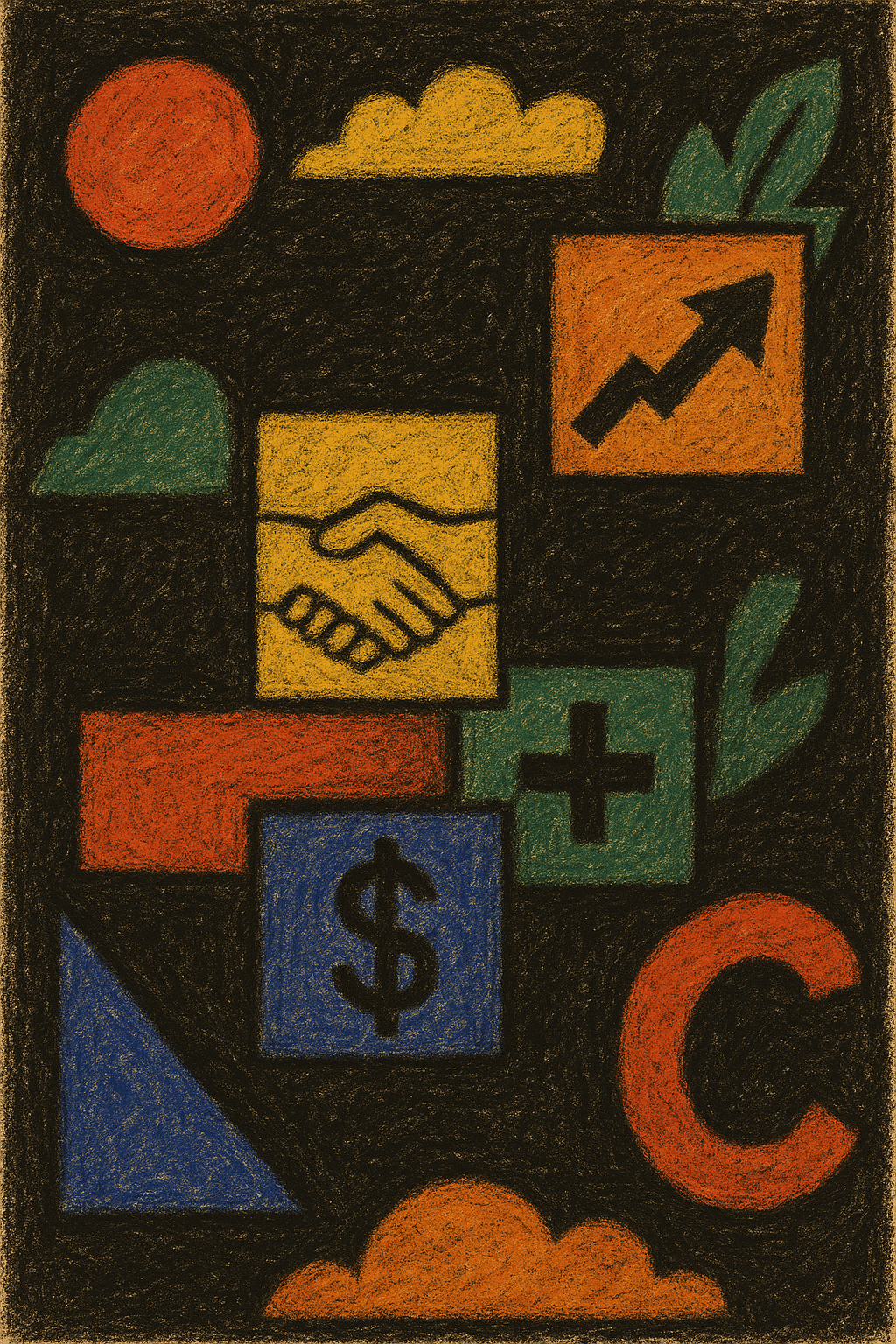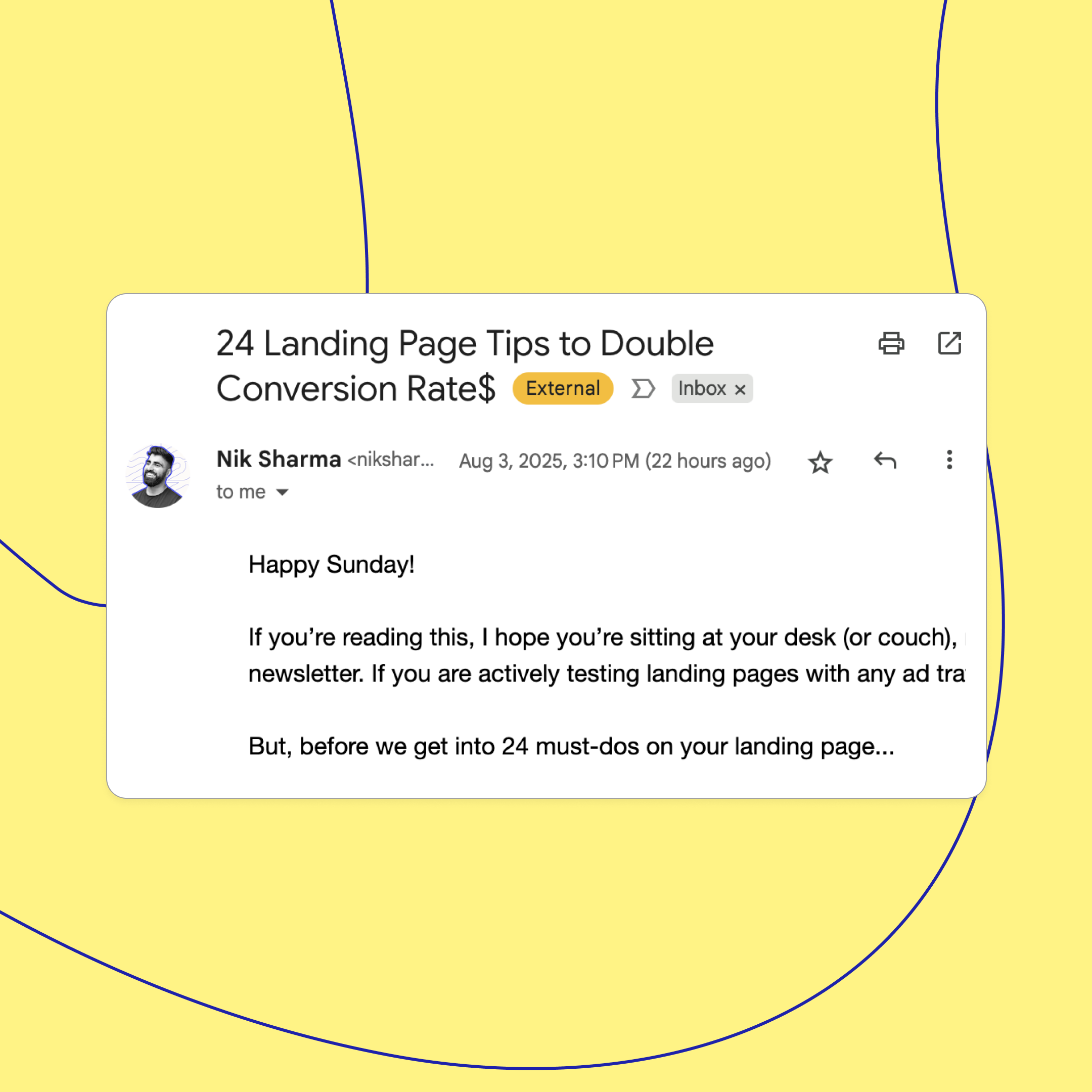A&F is writing the new rules
Let's talk about Abercrombie & Fitch (A&F). A brand that for so long dominated malls, billboards, and the hearts & minds of our youth just 15 years ago. The famed “A&F” went from adorning the sleeves of students far & wide, to the butt of a nostalgic joke you'd tell at a dinner party. “Remember when A&F was THE place for back to school shopping?”, you’d say, while you earn a sheer second of laughter (maybe I’m speaking for myself here?).
Nonetheless, I think you get my point: A&F was in, then it suddenly wasn’t. However, if you work in eComm, love to shop, or if you trade in the public markets – you very well know it has roared back to the scene.

So what happened?
In the 2010’s distribution models were flipped on their heads. The former world where you HAD to pay to get impressions was gone, and what took its place was one where you could now CREATE to be seen, for free. I’m of course talking about the arrival of the social media influencer as we know it, and the entrance of new rules: where trends and determination of what was” in” or “out” was set by those who held organic eyeballs.
For context, social media usership tripled from 2010 to 2020. This combined with the fact that social media users reported that they trust 61% of influencer content they see VS just 38% of brand content – this all spelled trouble for brands that weren’t “in” as times changed. A&F entered an on-going fight to keep the brand alive amongst a whimpering valuation - and in 2016 was even voted the most hated brand in America.
How they pulled the comeback of a century
(Let’s go back to 2022) A&F recognized they couldn’t just spend their way through their problems. Mall real estate was becoming less meaningful, COVID-19 was still on a tear, and a Cambrian explosion of new DTC brands was at full steam – they needed a new strategy to keep up. So they decided to invest over $20mm in standing up a new influencer marketing program.
Enter their master plan: to re-write the brand not through their own narrative, but through the narrative of thousands of influential individuals via outfit curation.

Here’s how they did it:
1. First they toned down the brand - using the same old logo placements only reminded folks of the past and placed an unnecessary road block in front of a new narrative.
2. They focussed on the basics - literally. Then developed a vast catalog of logo-less styles, that made for easy outfit curation that could appeal to a modern audience (regardless of prior thoughts on the brand).
3. They took recruitment seriously. Seeding at immense scale, bundled with crystal clear expectations on content curation suggestions, ways to promote the new products lines, and clarification on how they can earn from the collab.
3. They gave influencers co-selling superpowers via a new way to curate fits, OOTD's, and entire closets with co-branded micro-shops. From Jamie's Summer Pick-up's to Sarah's Day at the Beach - content could now meet commerce with engaging ways to shop a look. Flipping traditional affiliate marketing on its head with a fresh taste of novelty.
4. They showed appreciation by following through with cash payments. At the end of the day, this was an affiliate program on steroids. Influencers were paid a strong commission-rate, incentivising them to put effort into curations, which in turn led to more sales, which led to cash in their pockets. This created a reward cycle that self-taught talent that they ‘get what they put in’ – next thing you know A&F was back on the map.
For Q3 earnings in 2023, A&F posted net income of $95 million (compared to a $2mm loss in the same quarter a year before), with revenue up 20% from the year prior as well. What followed was consistent quarterly growth hurling them back into the limelight.
But as big as the A&F story was, it’s actually far from unique. Adoption of influencers (aka Modern Affiliates) has skyrocketed in interest in the last few years - reviving & kick-starting brands big & small. To illustrate this, 60% of merchants reported an increase to their influencer marketing budget in 2024.
Looking ahead, brands aren’t just looking to get influencers into their corner, but they are arming them to become high-performing sales channels that can deliver revenue, not just impressions.
Modern affiliates deserve modern tools
The first place brands begin when embracing a modern affiliate/influencer program is recruitment. This broadly constitutes the theme of relationship management (AKA how do we get relationships with influencers who will promote our brand?).
This is a very natural place to start given it’s a prerequisite afterall. But unfortunately, the vast majority of brands stop here. So much energy goes into the formation of the partnership, leaving little resources & brainpower left to pursue a robust execution & co-selling strategy (akin to A&F). It’s easy for a brand to say “it’s good enough” but the problem is you’re essentially leaving money on the table.
By focussing on a concerted effort to improve “referral performance”, you can fundamentally double the sales of your individual affiliates (Something we see first hand at CreatorCommerce). Similar to A&F, brands are turning to co-branded shopping experiences to do this. Wherein they can empower anywhere from 3, to 30, to 3,000 of their affiliates to sell from a storefront that bundles their brand’s products & merchandising techniques with the unique content, recommendations, quotes, and styles of an influencer.
So when it comes to modeling a co-selling strategy for your brand, you should start by building a checklist around the 3 E’s:
Equity - They should give the affiliate a feeling of control & vested interests. This invokes a sense of status & purpose, and parallels many of the underlying benefits of entrepreneurship as a career path. As an outcome of strong equity in the collaboration, the affiliate should be able to layer in their own value props, leading them to a stronger motivation to share the collaboration with others.
Engagement - They should drive immense trust & novelty with the affiliate’s audience. Clear usage of a personality at the fore-front of a shopping funnel evokes this feeling of trust, and the one-of-a-kind nature of this drives pattern-disruption & a feeling of novelty. Both of these are key to secure engagement from an audience.
Earnings - At the end of the day, the whole point is earnings. On top of the use of likeness, they should have efficient actions at every step of the funnel. From auto-applying discounts, to 1-click checkouts. The beauty of strong co-selling arrangements is they feed off of earnings. Co-branded UX raises earnings, and those earnings fuel motivation for the affiliate to put in more effort (Capitalism has a funny way of nurturing free market relationships after all).
Drawing back to A&F, while they got a lot of things right, they still left a lot of opportunity on the table for themselves. Their affiliate shops didn't support the ability to purchase on site, and redirected shoppers back to the A&F homepage when they clicked a product (resetting the funnel). Additionally, discounts needed to be remembered & manually applied, adding more opportunities for conversion failure. Finally, creators had little opportunity to customize the pages for themselves, to bring in the personality or aesthetic their followers appreciate.
It can feel silly to critique a brand who’s crushing it, but discovering such areas for improvement can ultimately become an opportunity for your brand (when everyone else follows the leader). Use the 3 E’s to do this evaluation.
Looking ahead, what's the future of co-selling look like?
Co-branded influencer campaigns are going to be the standard – at least if you want a potent “owned” influencer community to build a profitable business on. Harkening back to why owned communities matter, it’s their ability to create a flywheel that circles back to your bottom line – where you get new customers for lower CAC, you get access to new ICPs, and you get autonomous sales reps who push you forward. That’s what’s at stake over the years to come, and is why all elements of your community need to be looked into now (with performance being just a pillar).
Soon they’ll be no shortage of:
- Shoppable closets for American Eagle’s influencers
- Shoppable workshops for Home Depot’s top builders
- Shoppable snack drawers for 7 Eleven’s munchie enthusiasts

Meanwhile, TikTok Shop, YouTube, and presumably Meta are at work building out their own answers to influencer performance. A blatant example of this is TikTok Shop, where influencers can convert affiliate-based sales directly on a TikTok feed. These constitute examples of “rented” communities - spaces that as a brand you should absolutely participate in to capture the money of the moment, but should not be treated as your very own community. Things change, supply/demand fluctuates, and while it can be easy to lean in completely to 3rd party marketplaces (spaces you rent), it’s critical to differentiate your influencer channels for the protection of the brand long-term.
Getting help
If you’re looking for a partner to help you seize this future, look no further than CreatorCommerce. We founded the company just under a year ago with the aim to provide merchants with an end-to-end solution to performance management through co-branded shopping experiences. CreatorCommerce plugs into a brand’s existing affiliate stack (like Social Snowball), and automatically generates co-branded storefronts for each & every influencer you work with.
If you want to learn more about CreatorCommerce, and our roadmap that’s dedicated to co-branded influencer campaigns, you can hit us up for a demo here. We’ll show you how brands like Naturisimo, FrostBuddy, and Triquetra are empowering their influencer community.





.png)





%201.png)
%201.png)
